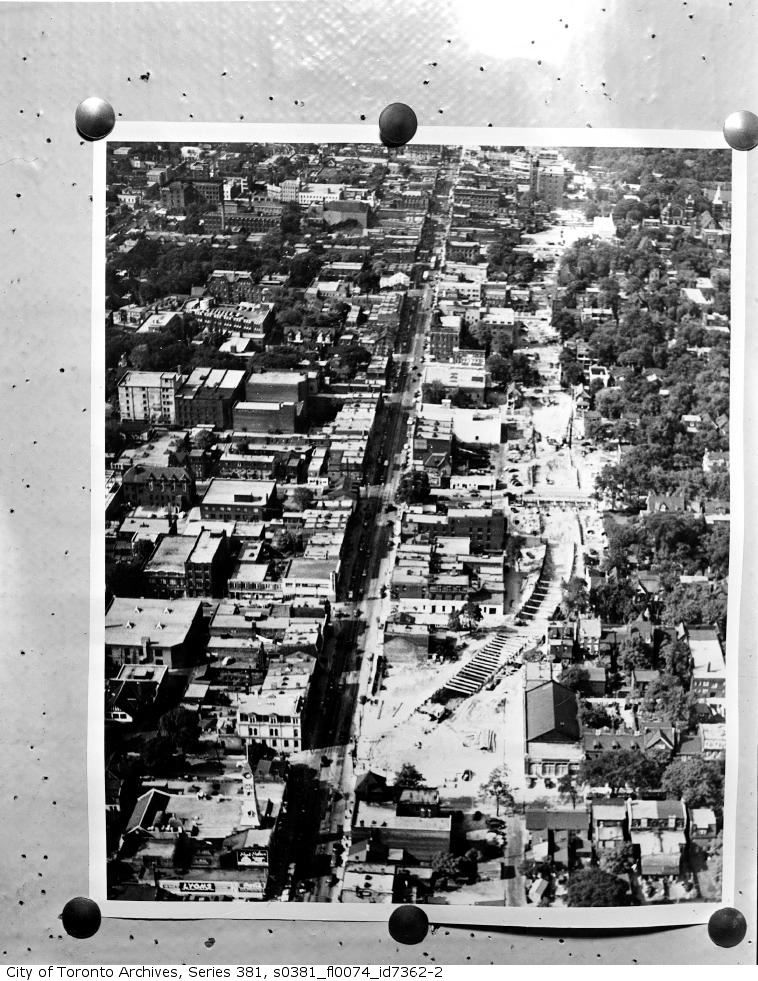CityPlaceN1
Senior Member
One Bedford went from a bunch of businesses to a Bank of Montreal and a Shoppers. Vibrant to safe and boring. Let's hope we get something better at 501.
The problem with one architect or one firm designing a long strip of retail along a street front is they are selfishly guarding their "design concept" and don't want everyday matters like, vendor's preferences or pedestrian's psychology to muddle up their perfect image of what they were going for.
Long strips of storefronts along a street should never look uniform though that is what almost all architects come up with. Their limited minds can only imagine the "whole" and it grates on their soul to have non-homogeneous storefronts repeating one after the other. I think many architects are actually obsessive compulsive types who align all their pencils on their desk perpendicular to the edge and anything out of place would cause them to go into apoplexy.
The truth is, when stores have all the same glass, signage, size, colour or what have you, psychologically the passer-by feels two things... First: "Seen one, you've seen them all." and interest is lost before they have walked halfway down the block... And second: More subliminally, the uniformity causes us to feel that all the retail is likely owned by the same people and no deals or anything interesting is to be had.
And we all walk on by, without stopping and soon the street is bleak and only the Dry-cleaners stays in business.
in reality, what gives a street "life" is randomness. Funky shaped store fronts. Different height signage. Random awnings. Storefronts that break the property line (some recessed slightly and some with cafe-style patio seating.) Roll-up garage door windows. Display areas with curved glass with mannequins in clothing.
Do architects NEVER go window shopping with their loved ones on a sunny afternoon? Are they trapped in their studios with fluorescent lighting and no windows all day? Do they even live in the real world?
Judging by their idea of Condo street presence, I think not.
Well there was the Bedford Ballroom. Besides that, a Harvey's, a Swiss Chalet, a Mr. Submarine, a copy shop, a Country Style Donuts, and I think a convenience store. Not too much more vibrant or interesting than your average suburban strip mall. Am I missing something?One Bedford went from a bunch of businesses to a Bank of Montreal and a Shoppers. Vibrant to safe and boring. Let's hope we get something better at 501.
This critique just summed up exactly how I feel about the state of architecture. So good to know other people on this modernist-loving forum think this way. I know architects will claim that they've come a long way from Le Corbusier, but they still seem to design their buildings to be appreciated from several miles away while hovering in the sky. I mean, just look at the renderings of new condos. They're rarely set at any human vantage point and the street levels of the buildings are usually blurred out with translucent cars or hordes of render-people.
Do architects NEVER go window shopping with their loved ones on a sunny afternoon? Are they trapped in their studios with fluorescent lighting and no windows all day? Do they even live in the real world?
Well there was the Bedford Ballroom. Besides that, a Harvey's, a Swiss Chalet, a Mr. Submarine, a copy shop, a Country Style Donuts, and I think a convenience store. Not too much more vibrant or interesting than your average suburban strip mall. Am I missing something?
And people may bemoan a singular montonous design aesthetic as a killer of retail, but that's exactly how Paris is designed.
The subway runs along the laneway to the east of the 501 yonge site and not under the site.
Building beside the subway tunnel is challenging - dealing with the TTC is the main problem. The principal technical challenge is to attenuate and isolate the vibrations (and a lesser extent the sound) emanating from the trains. Lanterra has done this before at 22 Wellesley and at One Bedford.
It is expensive and adds significantly to the costs of the development.

Not too much more vibrant or interesting than your average suburban strip mall. Am I missing something?
And people may bemoan a singular montonous design aesthetic as a killer of retail, but that's exactly how Paris is designed.
There is nothing monotonous about the Marais or many other shopping areas in Paris. Even where the Haussmann aesthetic reigns the street-level retail facades vary enormously.